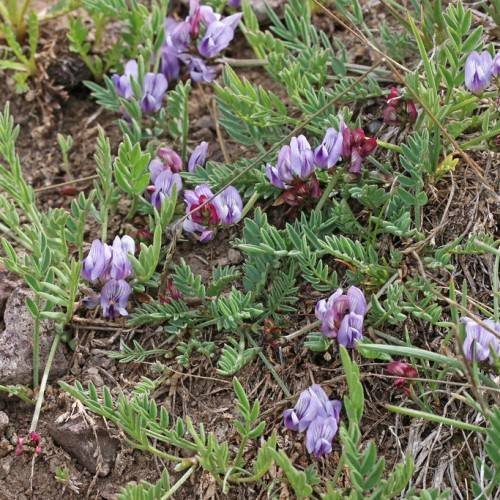
Timber Milkvetch
Astragalus miser var. miser
Watering:
Frequent
Hardiness Zone:
Sun:
full sun,part shade
Fruits:
Fruits Ready In
Leaf:
Yes
Growth Rate:
Low
Drought Tolerant:
Yes
Salt Tolerant:
Yes
watering
Salty Loco Milkvetch (Astragalus lentiginosus var. salinus) should be watered every 3-5 days using 1-2 inches of water. Depending on the air temperature, however, more frequent watering may be necessary. During the summer months, waterings may need to occur more frequently to prevent the plant from drying out. During the winter months, when the plant is not actively growing, waterings should occur less often. Soil should be allowed between waterings to dry out slightly before being watered again.
sunlight
Salty Loco Milkvetch (Astragalus lentiginosus var. salinus) requires full sun for best growth and flowering. This plant species can thrive in areas that receive at least 6 hours of direct sunlight per day. It prefers the cooler hours of the day which typically fall between 8am and 3pm, but it will tolerate more intense afternoon sunlight as long as the temperatures remain tolerable. This species can also handle partial shade, though it is usually less vigorous in areas that are not well-lit. In addition to the sun requirements, it is important to remember that it needs to be well-draining, as it does not tolerate heavy soils that stay wet or waterlogged.
pruning
When and how to prune Salty Loco Milkvetch (Astragalus lentiginosus var. salinus) plants will depend on the desired shape and size you want to achieve. To maintain the plants at their peak and keep them looking healthy, pruning should take place in late winter or early spring just as new buds begin to form. On the outer edges, thin out the existing branches to allow for more sunlight and air circulation. This will also help to keep the center area open. Carefully trim back any branches that are dead, diseased, or competing for space with healthy ones. You can also prune Salty Loco Milkvetch plants to create a particular shape or design. Start by removing the oldest stem at the base of the plant and prune the stems back to the desired shape. In general, you should aim to reduce the overall size of the plant by approximately 1/3 each year. It is also important to regularly inspect and remove any dead, damaged, or diseased stems or leaves as soon as they become visible. Doing this helps to ensure the healthy growth of your Salty Loco Milkvetch plants.
